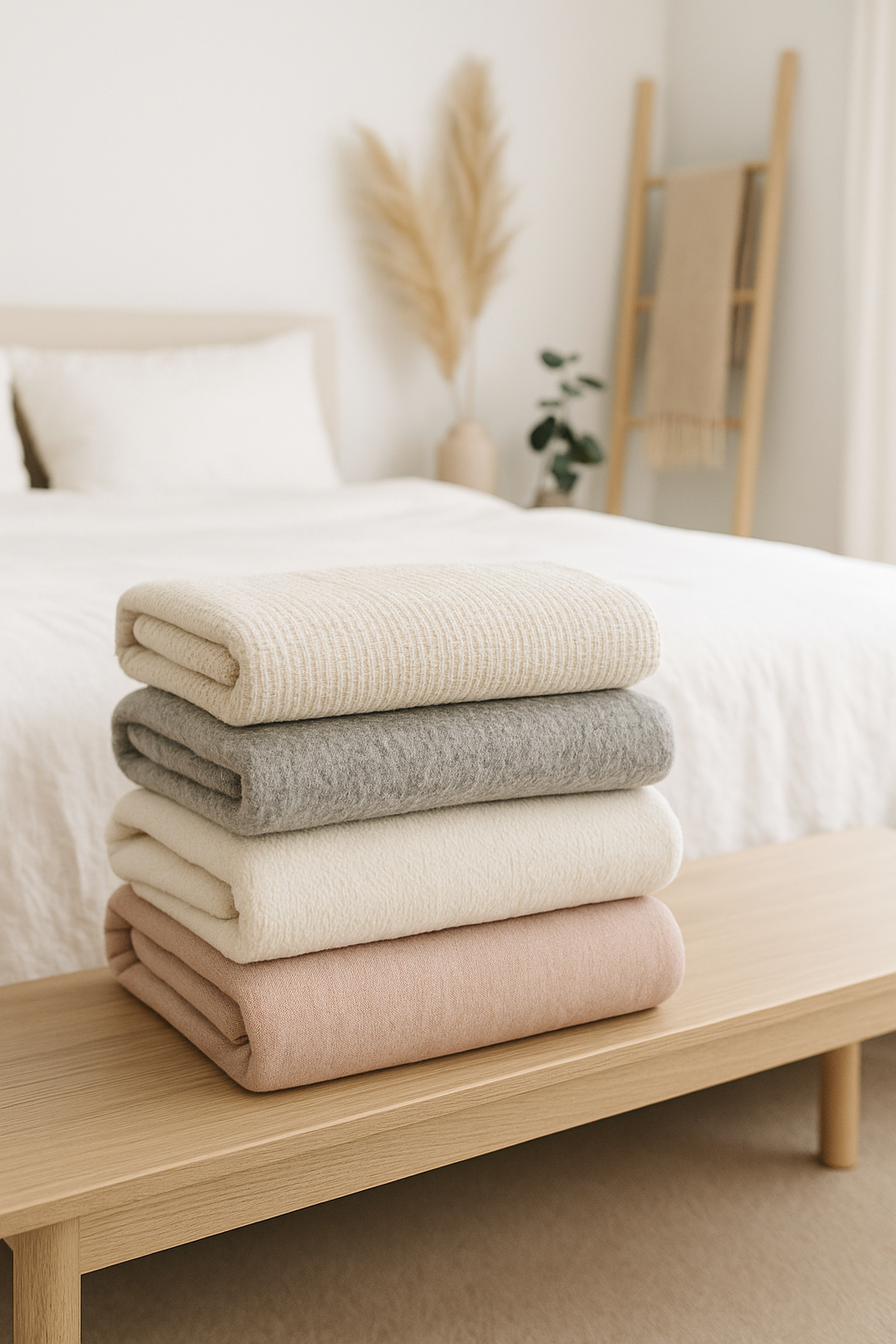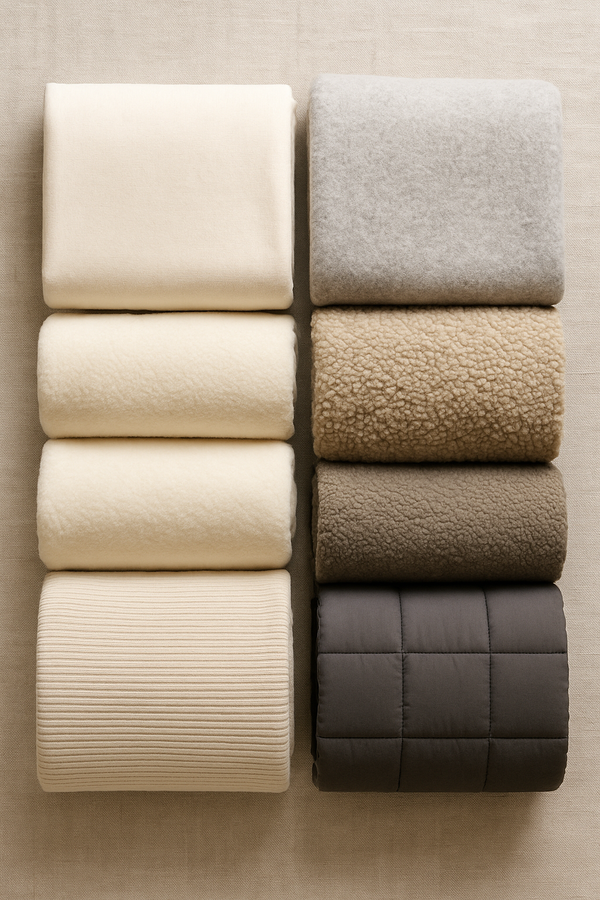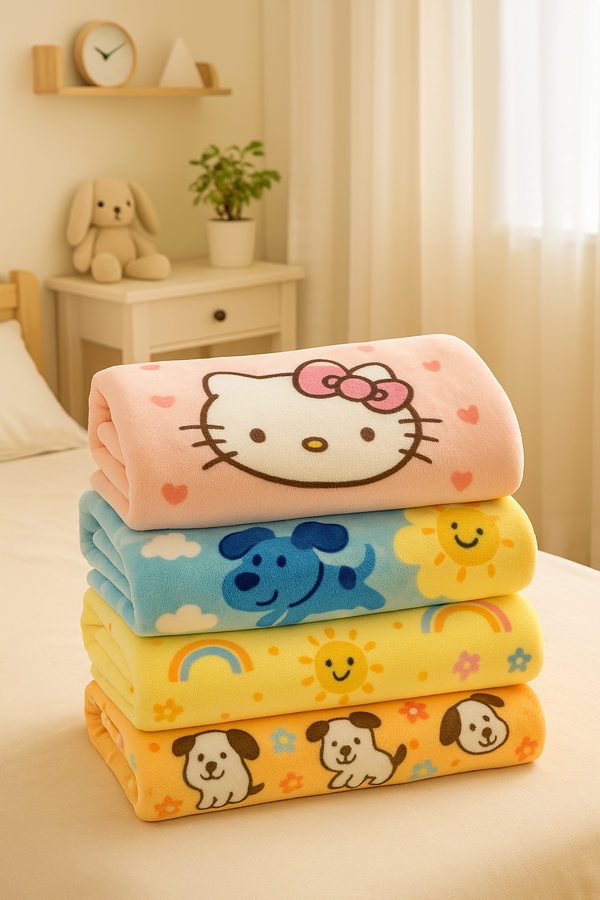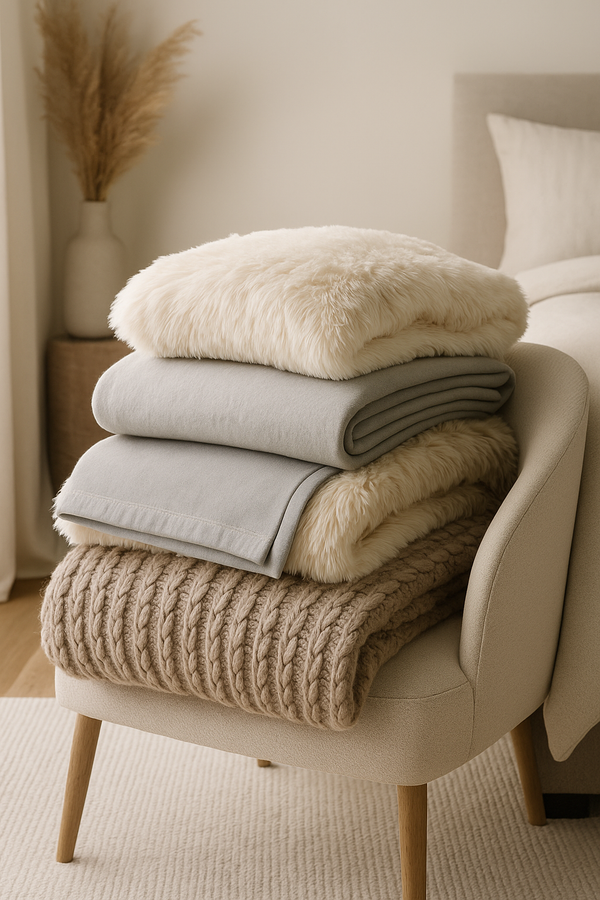Blanket fabrics make a huge difference in sleep comfort, how warm you stay, and even the style of your bedroom. The type of fabric you choose can be a game-changer—not just how your blanket feels, but also how well it'll hold up through the changing seasons.
From super-soft cotton to the luxurious feel of minky, the right fabric can turn your bedroom into the coziest room in the house - tailored to your lifestyle.
Blanks are made from natural fibers like cotton, wool, and bamboo - or synthetic fibers like polyester, fleece, and acrylic. And each of these materials has its own strengths and weaknesses, depending on things like how well they breathe, how warm they keep you, and how easy they are to clean.
Natural fibers like cotton and linen are great at keeping you cool and dry, making them perfect for year-round use. Synthetic fibers are great at lasting a long time and being easy to care for, which is perfect for everyday life.
Key things to bear in mind:
- Warmth: Wool and fleece are the best at keeping you toasty.
- Breathability: Cotton and bamboo are your best bet for staying cool.
- Softness: Minky and silk are among the most luxurious textures.
- Durability: Woven materials last longer and retain their appearance.
Choosing the right blanket fabric is all about finding a balance: your sleep habits, the climate you live in, and how much maintenance you're willing to do to keep your blanket looking its best.
Types of Fabrics for Baby Blankets
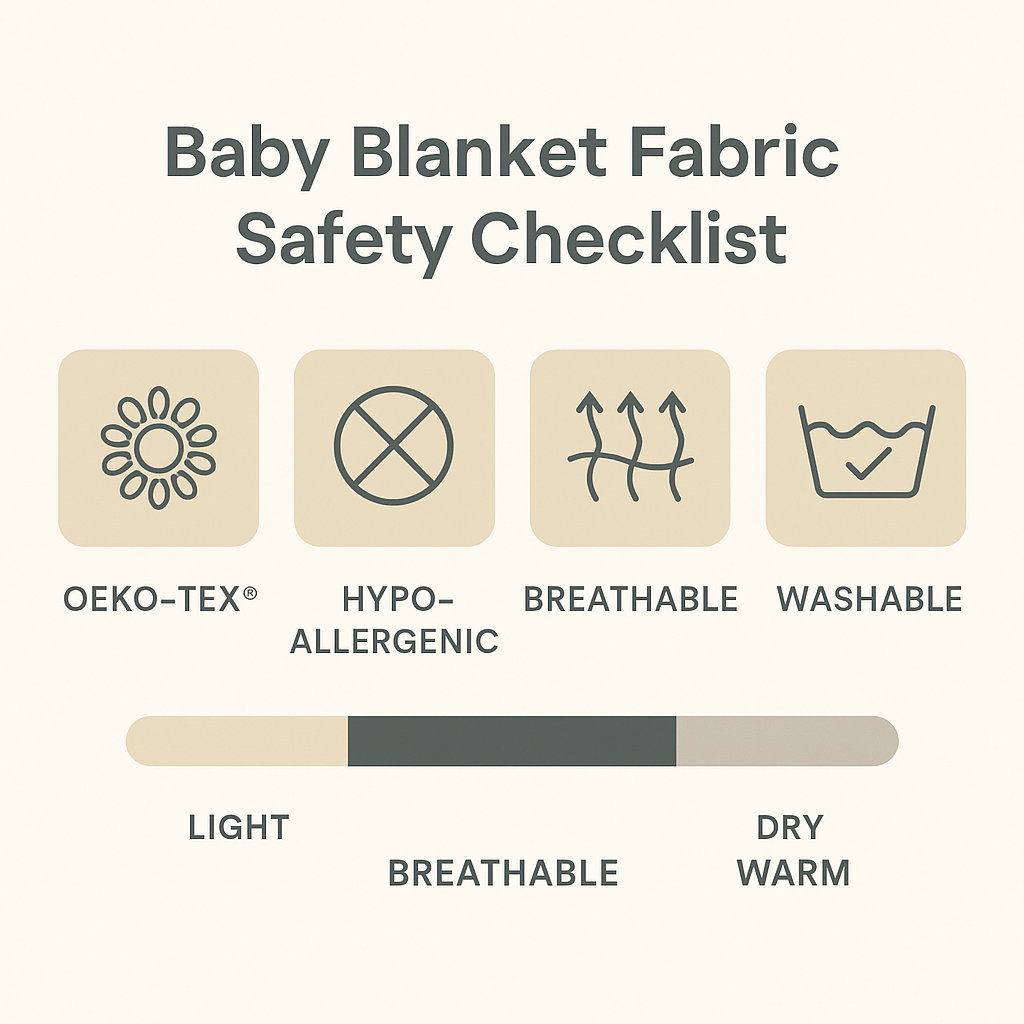
Baby blankets need to be super soft, safe, and easy to clean. Since babies have delicate skin, breathable and hypoallergenic materials are a must. These fabrics are great for little ones because they're so gentle on their skin.
The top fabrics for baby blankets:
- Cotton: It's super gentle on their skin, and naturally breathable to boot. It's perfect for year-round use.
- Minky Fabric: It's literally the softest thing you've ever felt - babies go wild for it! It's also super popular for making baby clothes and coats because it's so warm and soft.
- Bamboo: Eco-friendly and temperature-regulating, bamboo is perfect for super-sensitive skin.
- Cashmere: For when it's really chilly, it is a great choice—it keeps you warm without being too heavy.
If you love airy textures and cooling comfort, explore The Ultimate Guide to Cotton Bed Sheets for a Cool, Cozy Sleep to learn how high-quality cotton enhances softness, breathability, and long-term durability.
You can also mix and match different materials to get the right balance of softness and durability.
For parents: don't forget to consider:
- Durability: Cotton and bamboo are low maintenance, while minky and cashmere need a bit more TLC
- Washability: Cotton, bamboo, and yarn are all machine-washable.
- Avoid loose weaves: They shed and fray easily.
Fabric Characteristics and the Allure of Minky Fabric
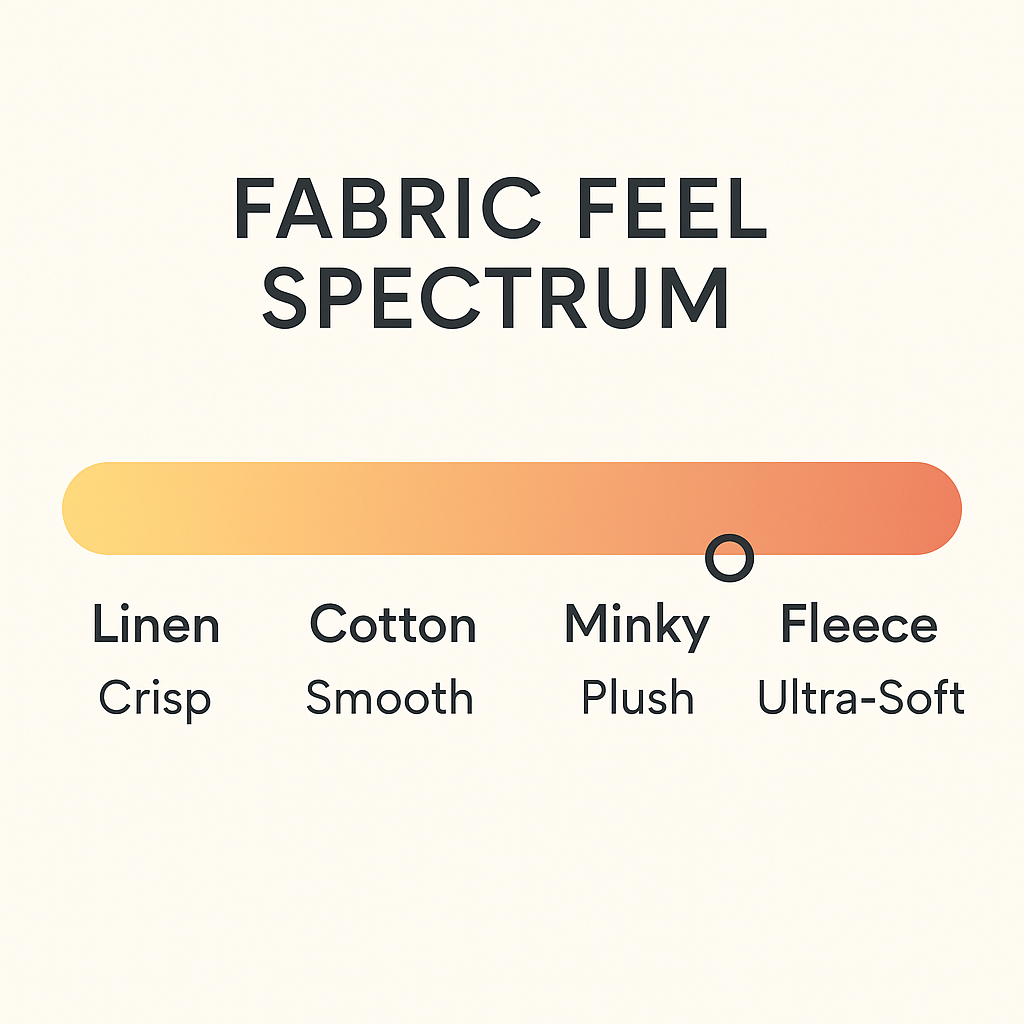
Minky fabric is in a league of its own when it comes to modern blanket materials. It's got this silky-soft texture that's just so luxurious. Made from polyester, it's a game-changer for warmth, durability, and comfort.
Minky's plush pile gives it a silky-smooth texture, and it's totally cruelty-free—perfect for anyone who wants to avoid animal fibers. Plus, it's super warm and comfortable, which is why it's so popular for throws, baby blankets, and decorative bedding.
Minky's key characteristics:
- Texture: Velvety soft and with a nice high pile
- Warmth: It's fantastic at keeping you warm on cold winter nights.
- Durability: It resists wrinkles, shrinking, and fading-long-lasting and easy to care for\
- Variety: There are heaps of colours, patterns, and embossed finishes to choose from
To keep your minky blanket looking its best, pre-wash on a gentle cycle and air-dry it—don't use high heat, or it'll all go wrong
Natural fibers like organic cotton and wool echo the eco-values seen in Birch Mattress: The Most Eco-Friendly Beds on the Market, where sustainability and comfort coexist beautifully.
Seasonal Considerations for Blanket Fleece Fabric

Blanket fleece fabric is one of the most versatile materials available—soft, insulating, and adaptable to every season. Its cozy touch makes it perfect for both chilly nights and lightweight layering in warmer months, giving you excellent warmth without extra bulk.
Winter and Transitional Seasons
When temperatures drop, thick fleece, wool, or flannel makes the best winter blankets.
- Choose high-GSM fleece for maximum insulation.
- Anti-pill fleece ensures durability and a smooth finish.
- Medium-weight fleece is ideal for fall and spring layering.
- Adds both warmth and a stylish look to your bedroom décor.
Summer Blankets and Breathable Alternatives
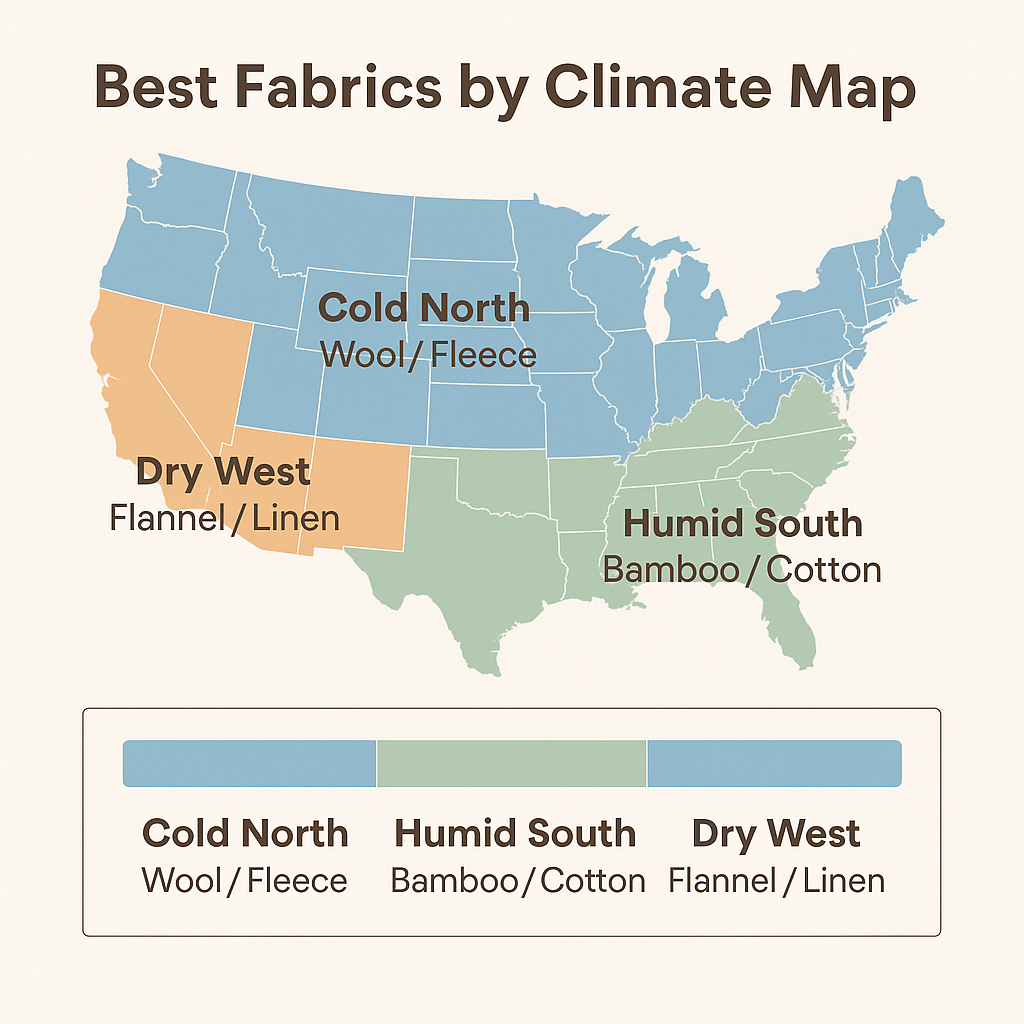
In the heat of summer, lighter cotton, bamboo, or linen blankets help regulate temperature.
- These other materials are moisture-wicking and breathable.
- Cotton fleece offers cozy softness even in mild weather.
- Linen stays crisp and cool for those without air conditioning.
- Great for eco-friendly, lightweight comfort year-round.
Tips for Choosing the Right Fabric
- Layer light fleece with cotton sheets for adaptable comfort.
- Double-brushed fleece provides a plush touch.
- Mix natural and synthetic fibers for balance and excellent warmth year-round.
When comparing natural vs. synthetic fabrics, insights from Is Awara Mattress Worth the Eco-Friendly Sleep Hype? highlight how organic materials outperform synthetics in comfort, breathability, and sustainability.
Quality and Durability

The quality of your blanket fabric determines how well it's going to last—how soft it stays after washing is a big one, too, and how it looks after all that wear and tear. Investing in high-quality materials up front is a smart move—it'll pay off in the long run.
The things that really matter for durability:
- Fiber content: Natural fibers like cotton and wool tend to last longer than synthetic ones - wool, for instance, comes from sheep, while synthetic alternatives like fleece are made in a lab.
- Weave vs. knit: Woven fabrics are generally more durable, and knits stretch out pretty easily.
- Weight and texture: The heavier the fabric, the better it'll hold up.
- Resistance features: Look for labels that say anti-pilling, fade-resistance, and shrink-proof.

High-quality fabrics are also much more eco-friendly. A lot of brands now offer GOTS-certified organic cotton or recycled polyester to reduce their environmental impact—and a premium blanket made with high-quality materials can last for years, still looking and feeling great even after all that use. And it's not just bedding—these fabrics are perfect for all sorts of home decor and craft projects.
To understand how layering affects softness and insulation, The Best Quilted Throw Blanket Picks for a Warm and Cozy Home showcases top fabrics designed for warmth and style.
Sustainable Fabric Options
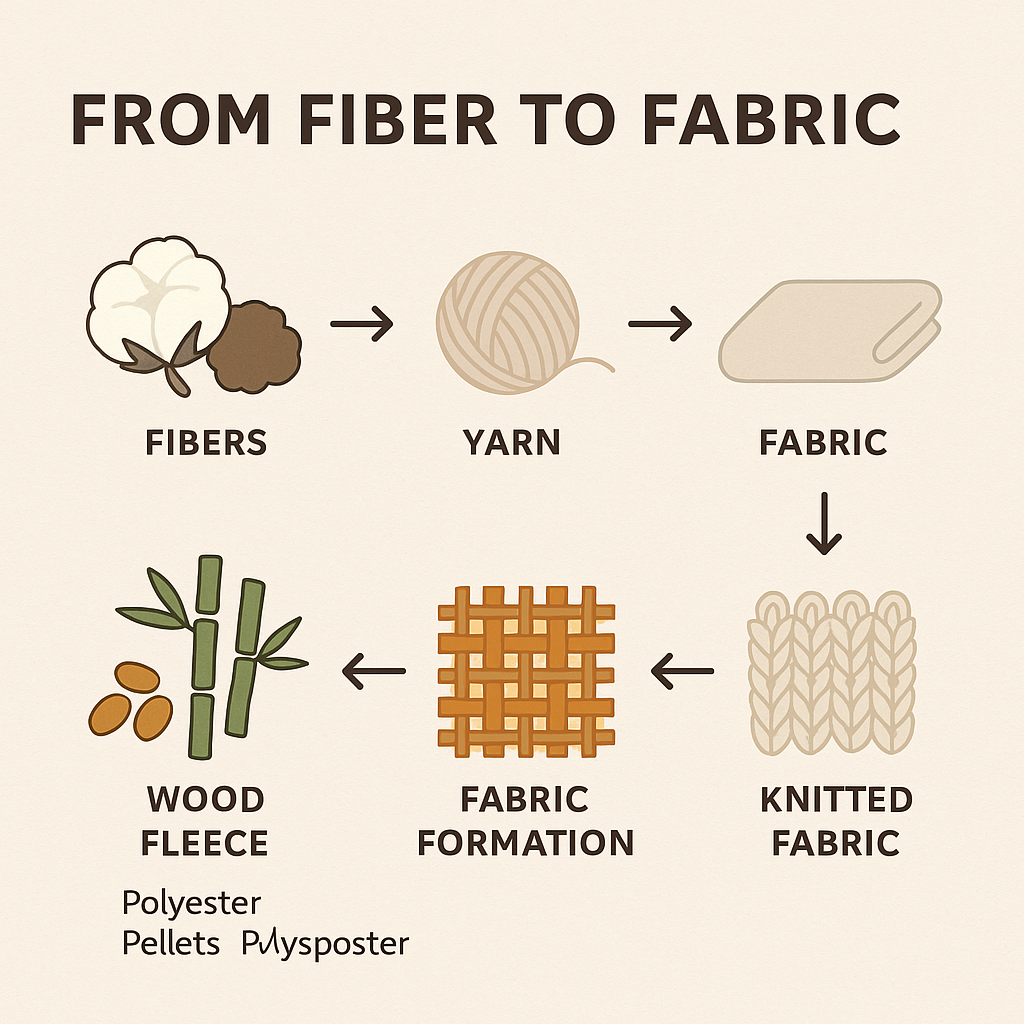
Choosing sustainable blanket fabrics is one of the easiest ways to make eco-conscious choices for your home. The right materials don’t just feel soft and warm—they also reduce your environmental footprint while adding timeless charm to your home décor collection.
Natural and Organic Fibers
Natural fibers like cotton, wool, and flax are breathable, biodegradable, and ideal for sustainable living.
- Organic cotton is grown without harsh chemicals, perfect for clothing, baby blankets, and jackets.
- Wool provides insulation with natural resilience.
- Flax and linen balance affordability and eco-friendliness.
- Available in soothing, earthy colors that complement any space.
If plush comfort is your priority, Why Are Hotel Comforters So Fluffy? Uncover Their Best Secrets explains how premium fillings and materials create that luxury-hotel softness.
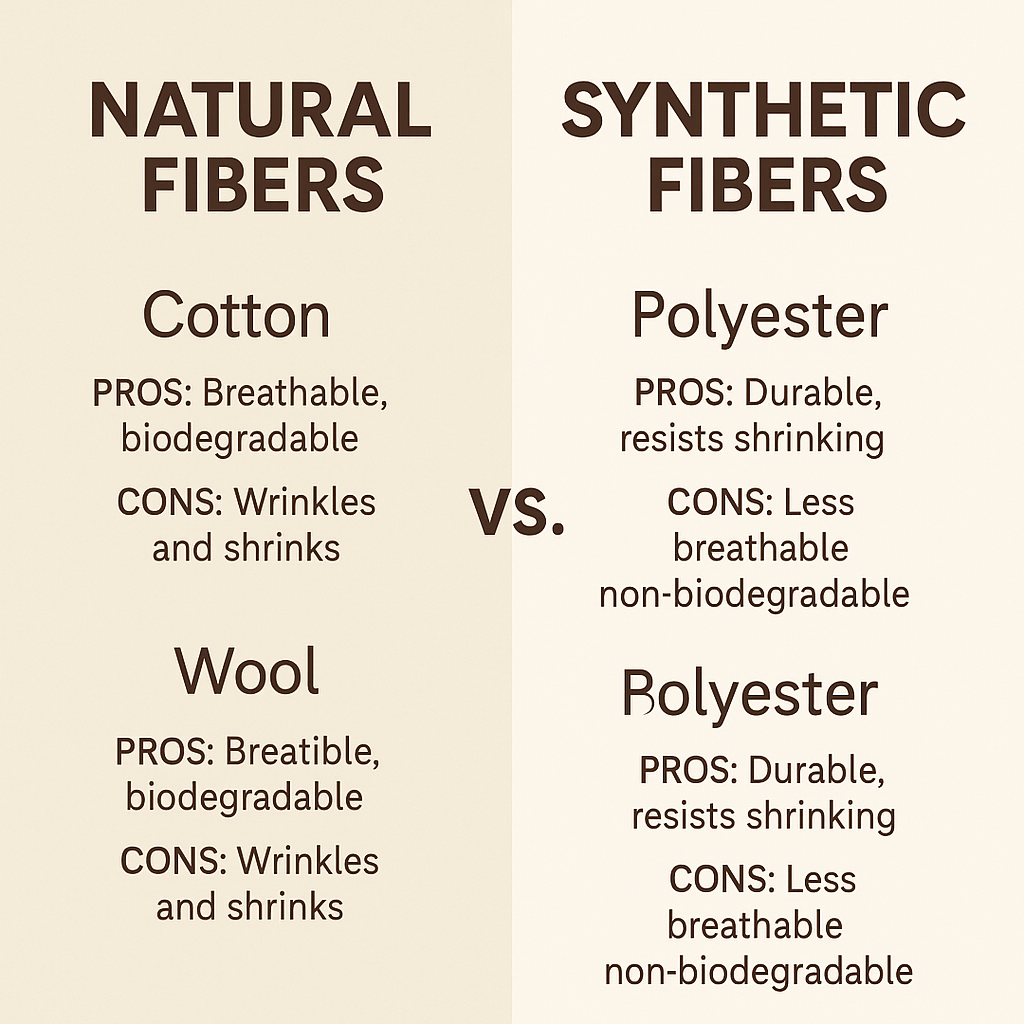
Blended and Innovative Materials
If you love plush textures, explore blended fabrics created from polyester and natural fibers.
- Combine comfort and sustainability in one.
- Retain softness even after multiple washes.
- Excellent for decorative throws and home décor accents.
- Additionally, they reduce waste and enhance durability.
Light and Breathable Summer Choices
For summer, discover fabrics like bamboo and linen that stay cool and absorbent.
- Moisture-wicking, quick-drying, and antimicrobial.
- Require less water and chemicals to produce.
- A smart, sustainable pick for comfort and style.
If plush comfort is your priority, Why Are Hotel Comforters So Fluffy? Uncover Their Best Secrets explains how premium fillings and materials create that luxury-hotel softness.
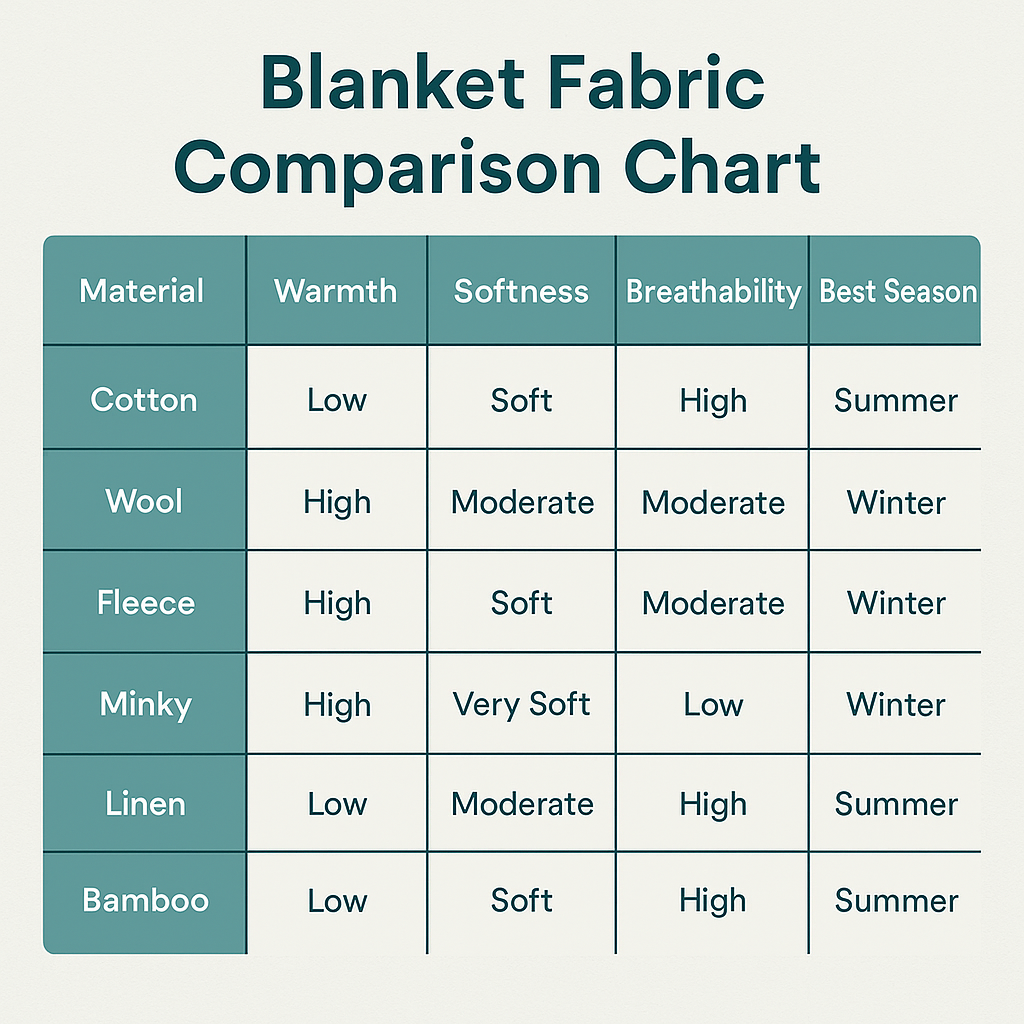
Budget and Cost Considerations
The price of blanket fabrics can vary wildly depending on the material, brand, and construction quality, so understanding your budget helps you find that sweet spot between cost, comfort, and longevity. Many retailers offer a range of blanket fabrics at different price points to suit different budgets.
Typical price tiers:
- Budget-friendly options: Polyester, acrylic, microfiber, and fleece—low cost, high durability, and perfect for budget-conscious buyers.
- Mid-range choices: Cotton, bamboo, and flannel—ideal balance of softness and breathability.
- Luxury fabrics: Wool, silk, and cashmere - expensive, but unmatched in terms of comfort and warmth.
Even if you choose a premium fabric, it often ends up being more cost-effective in the long run because it outlasts cheaper alternatives.
For an eco-chic bedroom, Eco-Friendly Bed Frame Materials: Bamboo, Reclaimed Wood & More dives deeper into sustainable design using bamboo, organic fabrics, and renewable resources.

Some ideas for saving a buck:
- Keep an eye out for seasonal bedding sales to snag your favorite fabrics at a discount.
- Buy fabric by the yard if you're after some custom or DIY blankets.
- If you're making something big, buy by the roll to save a pretty penny.
- Don't forget to use coupons or bulk discounts for project-based purchases.
- Choose organic blends for sustainability and value.
To make shopping for fabrics easier, use online filters for price, material type, or availability—this way, you can find the best deal before you check out.
Proper cleaning extends your blanket’s life. How to Wash a Weighted Blanket Without Ruining It: Best Tips offers fabric-safe washing and drying guidance.

Sourcing the Best Blanket Fabrics - A Key Part of the Job
You're just as likely to get your project derailed by a dodgy supplier as you are by a dodgy fabric choice. Knowing where to shop and which suppliers to trust is just as important as choosing the right fabric. Finding the perfect fabric for your next project is all about getting the right quality, authenticity, and value for money. And that all starts with some reliable suppliers.
Where to Track Down New Fabrics:
- Online Retailers: Amazon, Fabric.com, Spoonflower, and Etsy—they've all got a massive range, and it's a whole lot easier to shop online. Loads of places—both online and local—offer a variety of designs to suit your needs.
- Local Fabric Stores: They're great for getting a feel for how different materials will look and feel in real life.
- Wholesale Suppliers: Good for buying in bulk or for making handmade items to sell.
- Eco-Suppliers: If you're after organic cotton, bamboo, or recycled polyester fabrics, these guys are your best bet. And if you're after the real deal - cashmere from goats, for example, there are a few eco-conscious suppliers who sell it.
For allergy-friendly, naturally breathable bedding layers, explore Best Organic Mattress Pad Picks for Healthier, Restful Sleep, where organic fabrics support both health and sustainability.
Don't get caught out by shopping online: always check whether your chosen fabric is in stock before you hit add to cart—especially when they're having a sale and popular items sell out fast.
When you're shopping, keep an eye out for:
- Fiber content labels just to make sure you're getting the real deal.
- Customer reviews for feedback on how soft, shed-y, and durable the fabric is.
- Return policies for colour mismatches or other fabric issues.
Buying from sustainable suppliers might seem like a hassle, but it does help reduce your carbon footprint and promotes better practices.
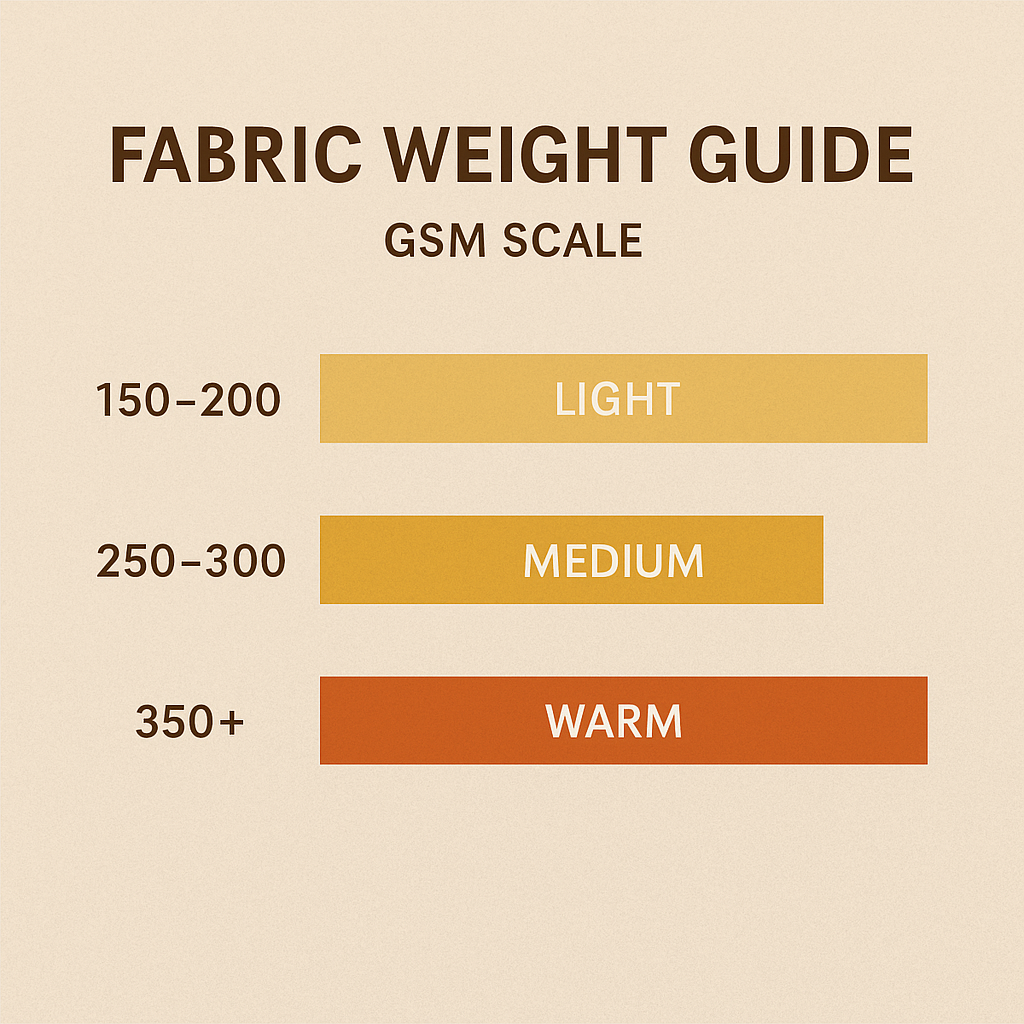
When function meets comfort, The Best Waterproof Bed Sheet: A Guide to Dry and Cozy Sleep shows how modern materials protect without sacrificing softness.
CONCLUSION:
Your choice of blanket fabric can be the difference between a night’s sleep that’s just okay and one that’s truly wonderful. Classic cotton is a winner for breathability, fleece is dependable for warmth, and minky offers the softest touch imaginable. The key is finding what suits you best—your comfort needs, your access to seasonal options, and your personal style.
Don’t be tempted to go for quantity over quality. Instead, look for fabrics that balance softness, warmth, and easy care. For people with limited space or budgets, versatile fabrics like cotton-blend fleece or bamboo are smart picks—they’re cozy, washable, and durable. Whether you’re crafting something handmade or simply buying a new blanket, choosing the right fabric makes all the difference.
Frequently Asked Questions
What kinds of fabric are used to make blankets?
The big ones are cotton, fleece, wool, polyester, and microfiber. Cotton is good for hot weather, fleece is good for chilly weather, and wool is great for insulation. Which one is right for you? It all depends on the season, how soft you like your fabric, and how much maintenance you're willing to do - cotton for summer, fleece and wool for winter.
What do you call the fabric for a blanket?
When you're talking about a soft, insulating fabric like flannel, fleece, minky, sherpa, or wool, you're talking about a blanket fabric. These fabrics are designed to keep you warm while still being comfy and looking good. You might also hear them referred to as throw, plush, or woven.
What type of fabric do you use for a no-sew blanket?
Fleece is the go-to if you don't want to do any sewing because it doesn't fray or need hemming. Polar fleece, microfleece, and plush fleece all work a treat. These fabrics are soft, warm, and easy to tie, making them perfect for quick DIY or craft projects.
What kind of fabric is best for a throw blanket?
The answer depends on how you want it to feel. If you want something breathable and easy to clean, go for cotton. Fleece and microfiber are good for warmth and softness, and if you want something really special, go for wool or cashmere.
How much fabric will I need to make a throw blanket?
For a standard throw, you'll need 2 to 2.5 yards of fabric, depending on the size and the seam allowance you've got. A big one might need 3 yards. For a soft, durable throw, fleece or flannel is the way to go.

